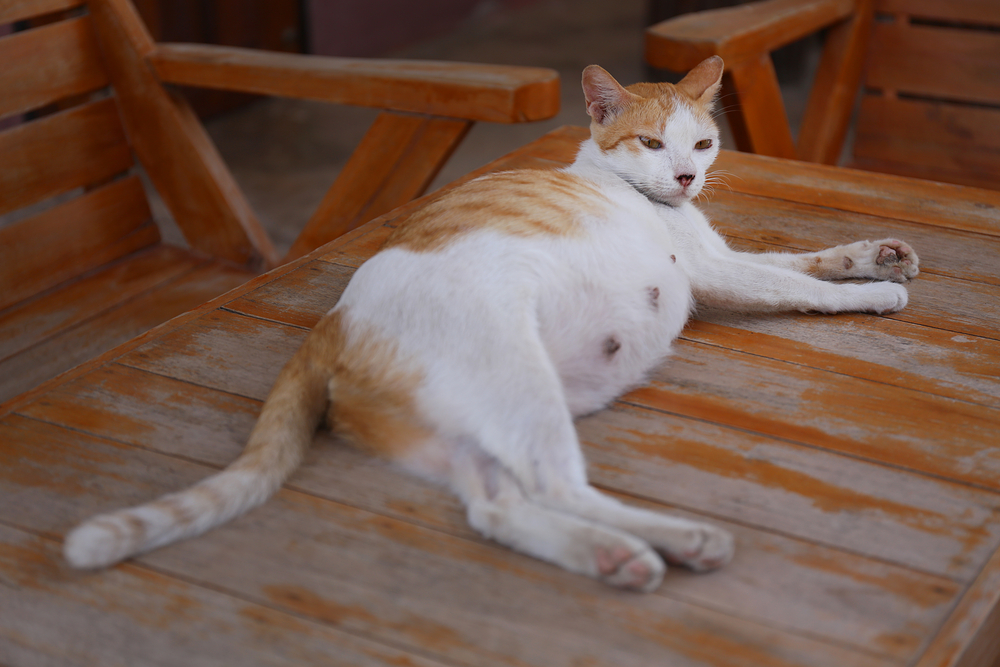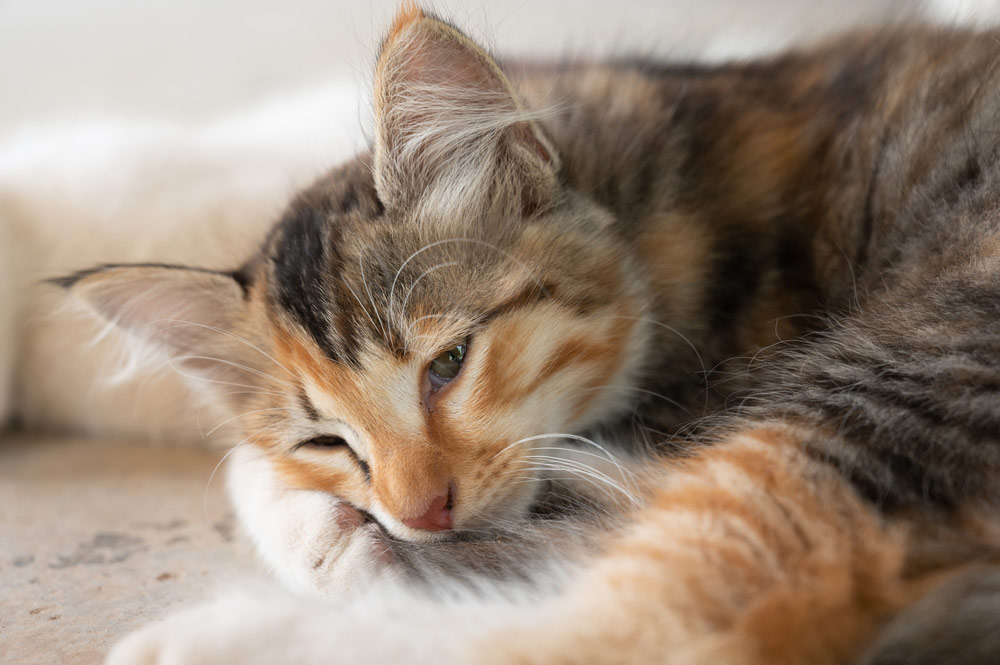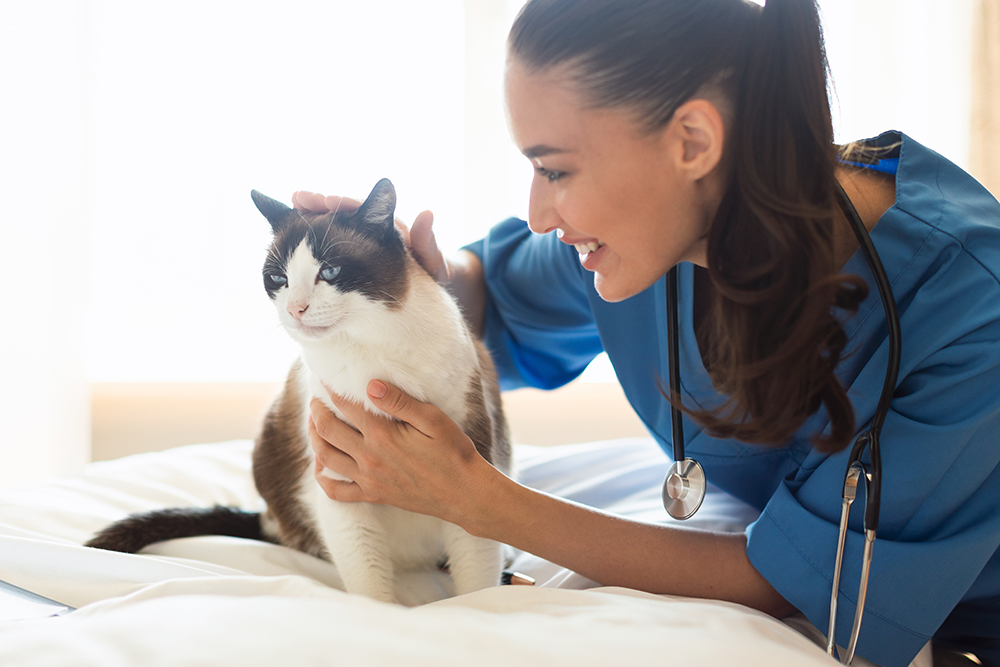It can be difficult to know for sure if a cat was abused. Certain signs, such as fear of strangers (or of a certain gender), excessive hiding, or misdirected or extreme aggression, along with various other signs, may indicate that a cat has had a difficult background. While it is often tough to know for sure, you should always approach these cats slowly and with respect.
If you are trying to take the next step and care for an abused cat, know that the challenge can be well worth the effort, as these cats can become loving additions to the right families. The hard part is knowing exactly how to care for them. So, if you want to add an abused cat to your household or are simply looking for general tips, here are seven ways to help care for an abused cat.

The 7 Ways to Care for an Abused Cat
1. Medical Care Is Key
If there was recent abuse and the cat has suffered a visible injury, medical care is a no-brainer. Recent or current physical injuries, even if they look to be healing, should be cared for under veterinary supervision.
However, if the cat you want to care for simply has a history of abuse that is not recent (e.g., months or years prior), you may have other options. While these cats should still see a veterinarian regularly, you may choose to give them more time to acclimate to people or the household before introducing a veterinarian into the mix. This can be especially important when bringing the cat to a veterinary clinic.
There are also good alternatives to traditional veterinary care. These can include home visits by a vet or a local feline-only clinic. Some veterinarians may also offer tele-consultations, though the extent of these is often fairly limited by practice law.
If the cat you are caring for is having behavior issues, feline behavior medicine has come leaps and bounds in recent years. So, finding a good feline veterinary behaviorist is generally easy. Better yet, these consultations are often well-suited to telemedicine. So, many times, you can do a lot to help your furry feline without even having to leave home.
If you will be traveling to the vet (or anywhere, for that matter) with your cat, it helps to acclimate them to the carrier they will be traveling with. Find one that is big enough to fit your cat—ideally, it’s the length of your cat, so their tail can stretch out without touching the sides. Bed carriers may be an exception to this rule! Ensure that there are at least two ways for your cat to go in and come out, so there should either be a door where the top easily comes off or two different doors.
Next, leave the carrier out and make it fun. Keep it clean. Offer treats and lots of soft bedding for your cat to sleep in.
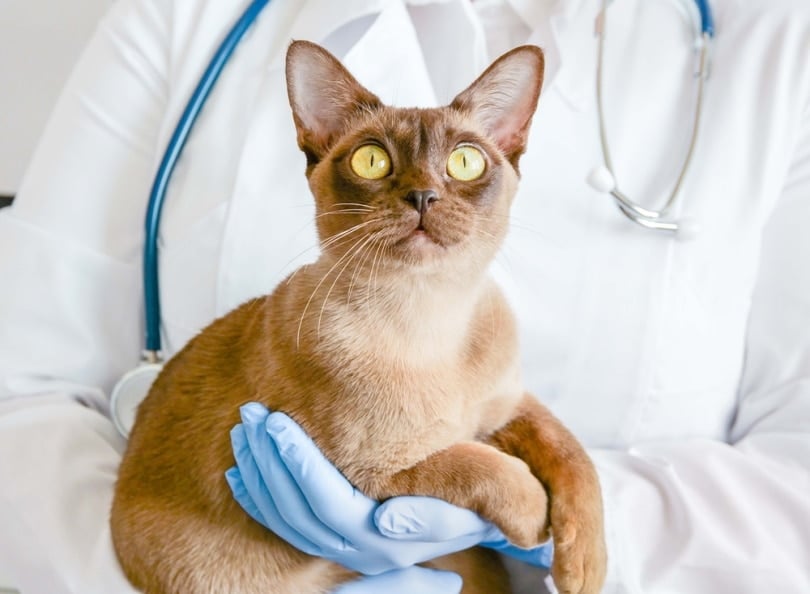
2. Think Like a Cat
Try to have a cat mindset—what would a cat like? How do they want to be approached if they are timid? If they are aggressive, could it be because they are afraid?
When trying to care for and interact with an abused cat, go slow. Cats are generally relaxed, slow-paced creatures—unless it’s 2 a.m. and they have the late-night zoomies! Otherwise, most of their interactions are slow and steady. Using the same mindset, be calm and relaxed. Don’t rush an interaction, especially if you’re in a hurry. Remember, cats are great at reading body language. The tone of your voice, your stance, and the way you carry yourself all greatly impact how you are perceived. Your body language is key to any relationship, human or feline alike.
If you only have a short period to spend interacting at that particular moment, pick an activity that fits into the timeframe, such as giving a treat and some praise or giving them a brush down in their favorite spot. Lots of small, positive interactions can be just as beneficial as longer ones when it comes to bonding with an abused cat.
Top Tip: The slow blink is a critical move to master when working with any cat, but especially when caring for an abused cat. A slow blink during direct eye contact means things are all good. If they return the slow blink, even better!
3. Don’t Underestimate the Persuasive Power of Food!
Nutrition is key for caring for cats in many ways. First, cats that have been previously abused may not have had access to the best diets and foods to keep them healthy. Therefore, feeding them a high-quality diet made for cats is very important. There are lots of good foods to pick from, and your vet can help recommend what might best suit your particular cat’s needs.
Second, many cats are extremely food motivated. This can help you find alternative ways to reward a cat that you are caring for. For instance, if you are trying to gain the trust of an abused cat, you might reward them with treats as you spend time with them. Alternatively, you may entice them to come out from a hiding spot with some nice food. Think creatively, and food can be a huge asset in this way.
Some cats prefer wet over dry or vice versa. Try lots of different things, and find out what your cat likes best. Then use that to select a variety of tasty treats that are best suited to them.

4. Give Them a “Cat Friendly” Environment
Caring for cats can be quite different than other animals, especially if the particular cat had a rough start in life. When creating a “cat-friendly environment” for them, think about hiding spots, background noises, and smells in particular.
Cats want lots of nooks and crannies to hide and sleep in. They may choose not to use them, which is fine. But having them allows them to feel safe and protected. This can be especially true for an abused cat. So, ensure that their environment gives them plenty of places to hide. This can be as simple as cardboard boxes with blankets or fancy cat trees with perches and cubbies. The idea is to simply offer your cat a place to get away when they need it.
Similarly, cats have a very acute sense of hearing—even normal sounds are amplified for them. Therefore, ensure that they have access to a quiet area of the house for sleeping and grooming. Similarly, avoid excessive smells when working closely with an animal, as their sensitive noses may be more apt to find certain smells offensive.
For smells, consider using a pheromone diffuser to help a cat know that the environment they are in is safe. Avoiding wearing strong scents when caring for an abused cat will also be helpful.
5. Incorporate Playtime
Most cats appreciate some playtime, though what toys and how long it will last depends on the individual cat. In caring for an abused cat, this can be a great way to help bring them out of their shell.

6. Be Mindful of Body Language
Reading a cat’s body language can help you to better understand how they are reacting to what you’re doing and how to better target your approach to help you best care for them. The following are signs that might indicate your cat’s feeling of uncertainty toward you and your mannerisms, so you can reconsider going about things in a different manner.
- Purring
- Lying on the side with their belly exposed
- Hissing or growling
- Hair standing up on their neck or back
- Not making eye contact or making excessive eye contact
7. Consider Getting a Second Cat
Caring for an abused cat is about showing them the way forward. Sometimes, the best way to do this is with another cat. Sound odd? A cat that hasn’t been abused is more apt to be outgoing, trusting, friendly toward people, and less concerned about strangers/strange things in their environment. Sometimes, this can help teach an abused cat what a more normal life can actually look like. In the best-case scenarios, they might even start picking up on some of these habits and implementing them themselves.
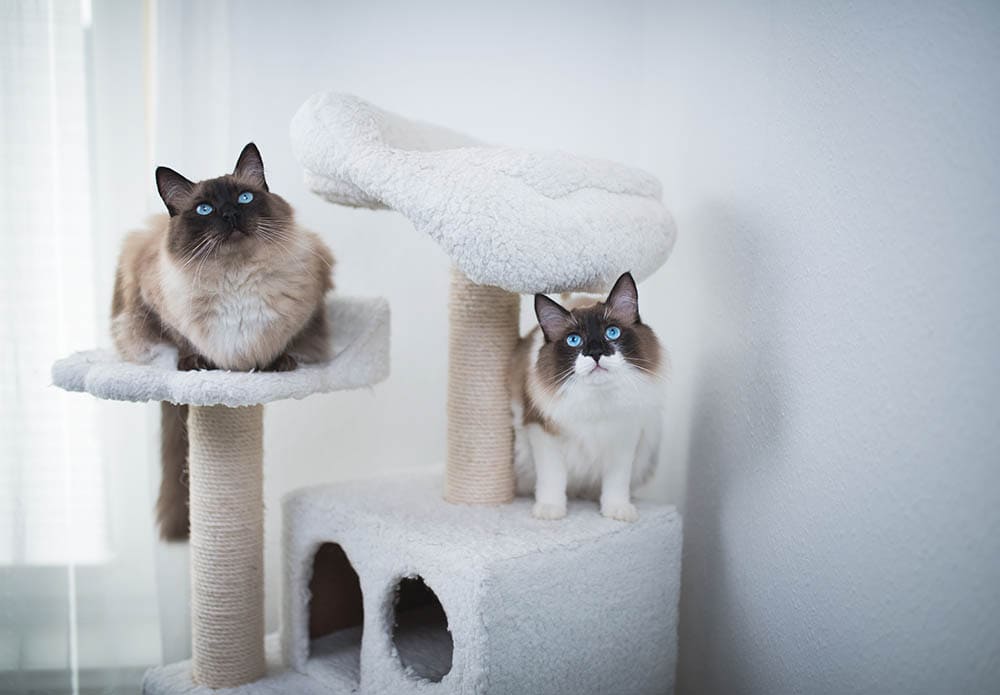
Conclusion
While caring for an abused cat can sometimes be challenging, it can also be one of the most rewarding experiences you will have. There is nothing like the reward of helping an abused cat live a wonderful, fulfilling new life.
Featured Image Credit: one photo, Shutterstock




